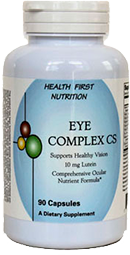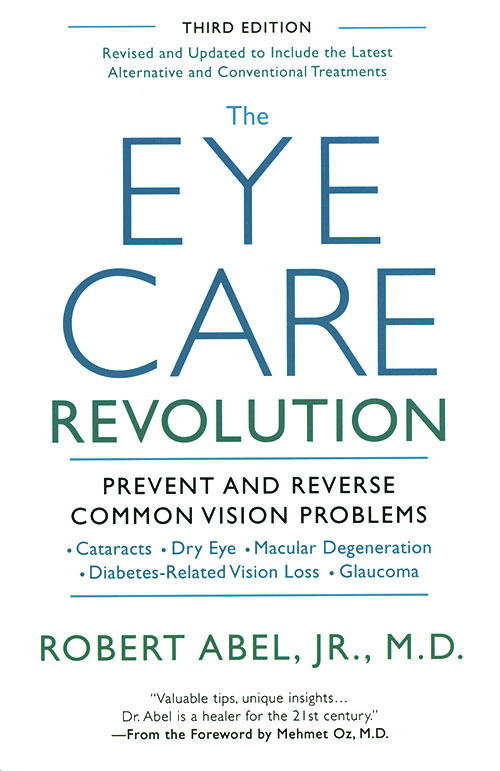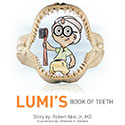Vitamins and Supplements for Eye Health
Nutrition cannot provide all the solutions to improving eyesight. We need to be able to add extra components to our dietary and life style program in order to catch up and restore what may have been lost.
The following are my general recommendations for improving your eyesight. They include those elements that are antioxidants, nerve supporters, pigment protectors, cell membrane components, vasodilators and co-factors.
It is always important to consume your fat soluble vitamins (A,D,E and K) with food for best absorption. I also advise taking some high DHA omega-3 fatty acids and vitamin D to complement your supplement support. There are blood tests to determine your particular blood level.
Eye Complex CS
I have created Eye Complex CS (clinical strength) which includes 23 Nutrients important for both eyes and general health. Rich in lutein and zeaxanthin, Eye Complex CS also serves as an excellent multivitamin.
Vitamin C
Vitamin C is an important structural component to strengthen capillaries and build collagen. It maintains the shape of the cornea, especially in cases of infection, and supports the fight against free radicals throughout the body. Vitamin C is the second most common antioxidant in the lens and prevents cataracts from developing.
B complex vitamins
The retinal receptor cells send all their messages through nerve fibers into the optic nerve and the brain. B complex vitamins are necessary for nerve function. B-12 is especially important since most people become B-12 deficient as they get older. 1000 mcg (micrograms) of B-12, sublingually (under the tongue), a day is recommended for people with optic nerve disease or glaucoma.
Alpha Lipoic Acid
Alpha lipoic acid is a very important nerve stabilizer to protect remaining optic nerve fibers in patients who are diabetic or have glaucoma.
Lutein
Lutein and other carotenoids are very important in the eye. We know that carrots are good for day vision, and lutein and zeaxanthin are important in protecting the central retina (the macula) from blue and ultraviolet light. Studies have shown that oral administration of lutein, or eating spinach, can increase the level of lutein in the retina. This is especially important for people with age-related macular degeneration (AMD).
DHA
Dicosahexaenoic acid, with six unsaturated double bonds, comprises 30 percent of the good fat in the retina, brain and adrenal gland. The primary source for this is algae and cold water fish such as tuna, mackerel, salmon and sardines. DHA has been used as a supplement in infant formulas to improve visual performance in the first year of life, as well as to support emotional and physical development. DHA, which stabilizes cell membranes throughout the body, has been found to improve the ability to follow objects at a distance (critical in driving) and eye-hand coordination.
N-Acetyl Cysteine
N-acetly cysteine is the primary component in the production of glutathione. Glutathione is produced and released by the liver, and is the major antioxidant in the lens of the eye. Cellular enzymes, such as glutathione reductase, super oxide dismutase and catalase, are the primary free radical-fighting potions inside our cells. Glutathione helps fortify these cells and protect many structures throughout the body while removing toxins from the body.
Magnesium
Magnesium is important in nerve conduction and it dilates blood vessels. 400-500 mg of Magnesium at bedtime (when blood pressure is often lowest) is important for maintaining blood flow to the eye and brain in elderly individuals with macular degeneration or diabetes. Magnesium and B-12 are the two most common nutrient deficiencies in the elderly.
Chromium
Chromium is important in regulation of blood sugar. Selenium is a co-factor for vitamin E, as well as glutathione reductase. Zinc plays a role in many enzymes present in the retina. Supplementation of more than 30 mg of zinc daily requires adding 2 mg of copper.
Gingko biloba
Gingko biloba has been used for millennia for eye and central nervous system problems. It is known to be a selective cerebrovascular dilator and seems to increase circulation to the back of the eye. It is becoming an adjunct in the treatment of macular degeneration and glaucoma. Although there are no critical studies that show a definite scientific value, there are many reports about its increasing blood flow to the eye.
Coleus forskohlii, Pilocarpus jaborandi, and Triphala
These have been recommended for patients with glaucoma to lower intraocular pressure via parasympathetic relaxation of the body. Triphala (composes of Emblica officinaliis, Terminalia belerica and Terminalis chebula) has long been known in Ayurvedic medicine for the treatment of glaucoma. It is interesting that its mild laxative effect brings about a generalizing calming feeling, which is so important for glaucoma individuals to reduce stress. Magnesium and B-12 are also important for these individuals with chronic glaucoma.
Silymarin
Silymarin is the primary component of milk thistle. Silymarin is a major liver support and is the only known treatment for chronic active hepatitis and for alcoholic cirrhosis. The liver is the key organ for the eye, since all the fat soluble vitamins and glutathione are stored there. The B vitamins are activated in the liver. The eye is subjected to bright light throughout the day and the important ingredients for repair are stored in the liver. When the liver is overburdened, eyesight will be compromised.







